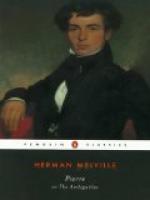|
This section contains 6,953 words (approx. 24 pages at 300 words per page) |

|
SOURCE: “All's o’er and ye know him not’: A Reading of Pierre,” in Herman Melville: Reassessments, edited by A. Robert Lee, Vision and Barnes & Noble, 1984, pp. 116-34.
In the following essay, Gray explores Pierre as “an artifice that calls attention to its own artificiality” and suggests that the novel is a predecessor of Vladimir Nabokov's Pale Fire and Jorge Luis Borges's Ficciones.
Herman Melville completed his sixth and greatest novel, Moby-Dick, in the summer of 1851. The book must have cost him an enormous amount in terms of imaginative energy, moral effort, and sheer physical strain: and yet, within a few weeks of completing it, he was already at work again preparing his seventh novel, which was eventually to be called Pierre: Or, The Ambiguities. In many ways, Pierre represented something of a new departure for Melville. For, in the first place, it was set on land rather...
|
This section contains 6,953 words (approx. 24 pages at 300 words per page) |

|


